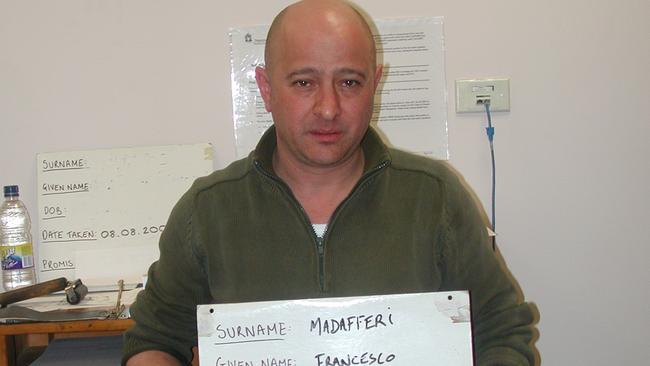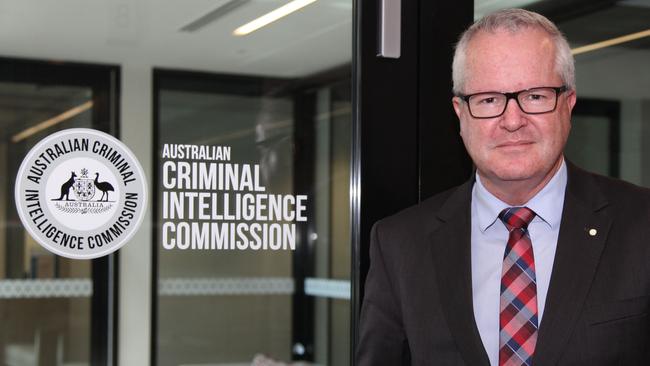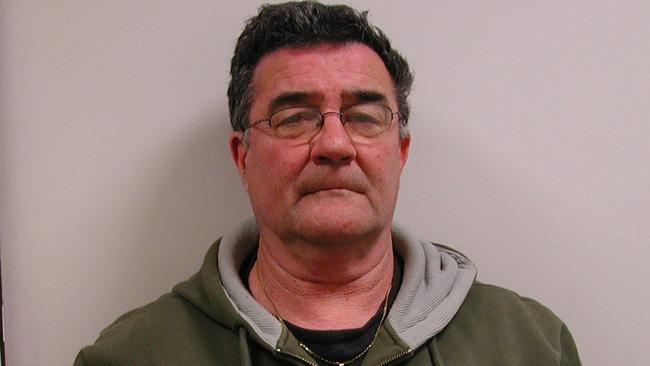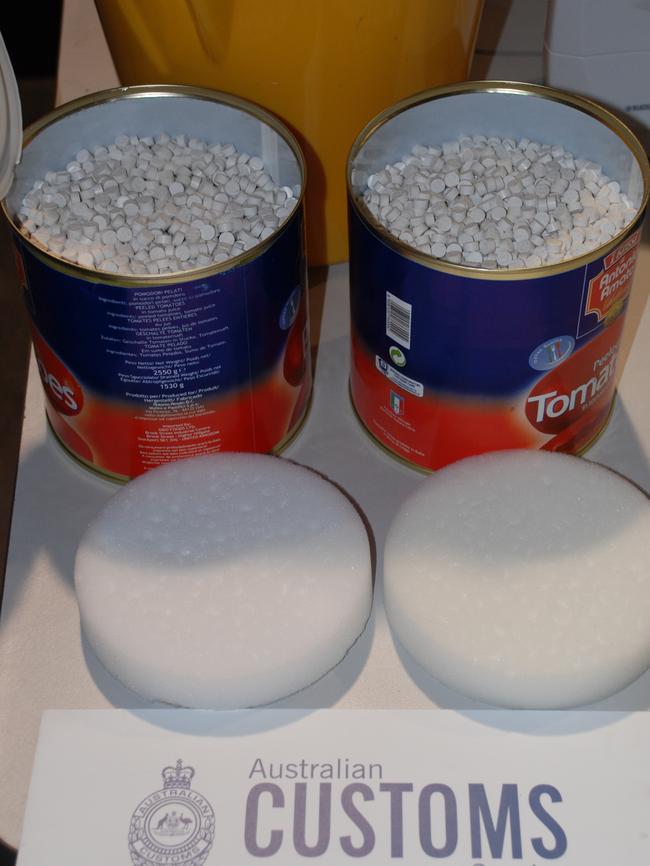Australian Criminal Intelligence Commission to target Calabrian mafia
AUSTRALIA’s newest and most powerful crime fighting agency is planning to take on the Calabrian mafia. Keith Moor reveals the top priorities of the Australian Criminal Intelligence Commission.

AUSTRALIA’s newest and most powerful crime fighting agency is planning to take on the Calabrian mafia.
Investigating the Italian secret society’s major role in the nation’s illegal drug market will be one of the first tasks undertaken by the Australian Criminal Intelligence Commission.
The ACIC came into being on July 1.
It replaced and took on the roles of the Australian Crime Commission, CrimTrac and now also administers the Australian Institute of Criminology.
Former ACC chief executive Chris Dawson has been appointed as ACIC boss.
He this week confirmed to the Herald Sun that cracking down on Calabrian mafia figures in Australia was on the ACIC’s agenda.
The Calabrian mafia is one of the world’s biggest traffickers of ecstasy and cocaine and has a strong presence in Australia.
In his first interview since becoming ACIC chief executive, Mr Dawson also revealed:
THE new body he heads will use its powers to force foreign fighters to answer questions when they return to Australia from Syria and Iraq — and that it has already started doing so.
THIS use of the ACIC’s coercive powers against returning foreign fighters is to work with Australia’s security agencies to try to prevent the radicalised Islamic State jihadists from using the dangerous skills and deadly tactics they learned overseas to commit terrorist acts in Australia.

THE ACIC is building a highly sophisticated database to help police, spy agencies and immigration officials to positively identify terror suspects, organised crime figures and other undesirables.
EXAMPLES of what could be stored on the ACIC’s $52 million biometric database include footprints, voice recordings, photographs of faces, scars, tattoos and other distinguishing features as well as fingerprints and DNA.
HE expects a number of the Australians named in the leaked Panama Papers to be investigated for multi-million dollar tax evasion offences.
The Australian Government warned in late 2015 there was evidence of an unprecedented threat to Australia from terrorists and criminals who were exploiting gaps in law enforcement information to avoid detection.
“The ACIC was formed to strengthen Australia’s ability to combat this threat,” Mr Dawson said.
He said the ACIC would close the gaps that currently result in an inability for Australia’s many law enforcement and other agencies to quickly and efficiently share all the evidence and intelligence they gather with each other.
“If you collate all those data sets together and make all that information available to agencies across Australia in real time then that is going to make our nation a safer place to be,” Mr Dawson said.
“That’s what the ACIC’s national criminal intelligence system will do.
“This is actually going to really revolutionise the way in which law enforcement officials around the country operate in that they will be able to get much better and richer information and intelligence much faster.”

Examples of its use range from a traffic cop who stops a vehicle being able to learn everything about the driver within seconds to counter-terrorism police faced with a Lindt cafe siege-type situation getting much faster access to the background of the hostage taker.
Mr Dawson said another vital ACIC role will be to use its resources to establish which emerging and established criminal groups or individuals should receive the most attention from police and other agencies.
“We have a threat assessment model which enables us to ensure the targets creating the greatest harm to Australia are the ones that our police, other agencies and ourselves focus our attention on,” he said.
“It allows us to determine those who are presenting as the greatest risk to our community and to respond accordingly.”
Mr Dawson revealed the ACIC had already used the threat assessment model to rank outlaw motorcycle gangs and the Calabrian mafia as being among the organised crime groups in Australia which warrant increased and sustained attention.
He said bikies and Mafioso had been firmly on the old ACC’s radar and both would continue to be in the new ACIC’s sights in coming years.
The ACC was involved in helping Australian Federal Police identify the key Calabrian mafia and bikie figures behind the 2007 world’s biggest ecstasy bust of 4.4 tonnes in Melbourne, including Victorian mafia boss Francesco Madafferi, Black Uhlans bikie gang founder John Higgs and Griffith based mafia kingpin Pasquale Barbaro.
Mr Dawson said it was not that long ago that an organised crime group like the Calabrian mafia would not involve itself with gangs like the bikies, and vice versa, as each preferred operating with their own kind.



“One of the features we are seeing in the Australian criminal landscape is that there is a degree of mobility amongst crime groups themselves,” he said.
“Criminals no longer seem to be exclusively aligned to one particular group, some shop around.
“An example of that is a drug cook for one crime syndicate being employed by another syndicate to cook up drugs for them.
“That’s why we go after such people because we know if we take out one drug cook we actually may disrupt quite a number of different syndicates.”
The Federal Government has asked the ACIC to create a national system to allow police and courts in different jurisdictions to share information about domestic violence orders and related family court orders — which they can’t do at present.
It is working on a system where police, using a mobile phone or in-car data terminal, will be able to search a person’s name on the national police reference system to confirm if they are subject to an order anywhere in Australia.
“The purpose of the system is to join up the court justice systems with the police systems so that the attending police officers, on receipt of a complaint or incident, are able to get the most contemporary information that has been generated,” Mr Dawson said.
“These are some of the most challenging incidents that police officers get called to and if they are provided with the best possible information and intelligence before they get there they will be pre-warned of any prior incidents or existing domestic violence or other orders.”
Mr Dawson said the ACIC would offer a more comprehensive service than was available through the Federal agencies it was replacing.
“The ACIC has got some different functions,” he said.
“The principal reason is we have a firm conviction, as does the Government and the ACIC board, that Australia can do better in harnessing our collective efforts in the law enforcement dataset that the CrimTrac agency had been responsible for.
“That CrimTrac dataset can be much more enriched and optimised by joining it together with the ACIC’s analytical capabilities and then federating all that information and intelligence to our partner agencies.”
Justice Minister Michael Keenan, who pushed for the creation of the ACIC after recognising there were gaps in the nation’s intelligence gathering capabilities, yesterday said the new agency would help police identify, detect and disrupt threats to the nation.
“The ACIC is critical to the future of Australia’s national security because it is vital our law enforcement and protection agencies have accurate information and intelligence so they can respond to immediate threats,” Mr Keenan said.
